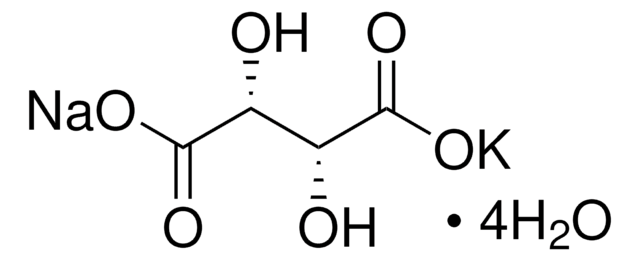379263
2-Methyl-2-butene
technical grade, 90%
Synonim(y):
β-Isoamylene, Amylene
About This Item
Polecane produkty
klasa czystości
technical grade
Poziom jakości
gęstość pary
2.4 (vs air)
ciśnienie pary
25.7 psi ( 55 °C)
7.95 psi ( 20 °C)
Próba
90%
Postać
liquid
granice wybuchowości
8.7 %
współczynnik refrakcji
n20/D 1.385 (lit.)
tw
35-38 °C (lit.)
mp
−134 °C (lit.)
gęstość
0.662 g/mL at 25 °C (lit.)
ciąg SMILES
C\C=C(\C)C
InChI
1S/C5H10/c1-4-5(2)3/h4H,1-3H3
Klucz InChI
BKOOMYPCSUNDGP-UHFFFAOYSA-N
Szukasz podobnych produktów? Odwiedź Przewodnik dotyczący porównywania produktów
Opis ogólny
Zastosowanie
Polecane produkty
Hasło ostrzegawcze
Danger
Zwroty wskazujące rodzaj zagrożenia
Zwroty wskazujące środki ostrożności
Klasyfikacja zagrożeń
Acute Tox. 4 Oral - Aquatic Chronic 2 - Asp. Tox. 1 - Flam. Liq. 1 - Muta. 2 - STOT SE 3
Organy docelowe
Central nervous system
Kod klasy składowania
3 - Flammable liquids
Klasa zagrożenia wodnego (WGK)
WGK 3
Temperatura zapłonu (°F)
-4.0 °F
Temperatura zapłonu (°C)
-20 °C
Środki ochrony indywidualnej
Eyeshields, Faceshields, Gloves
Wybierz jedną z najnowszych wersji:
Masz już ten produkt?
Dokumenty związane z niedawno zakupionymi produktami zostały zamieszczone w Bibliotece dokumentów.
Nasz zespół naukowców ma doświadczenie we wszystkich obszarach badań, w tym w naukach przyrodniczych, materiałoznawstwie, syntezie chemicznej, chromatografii, analityce i wielu innych dziedzinach.
Skontaktuj się z zespołem ds. pomocy technicznej









